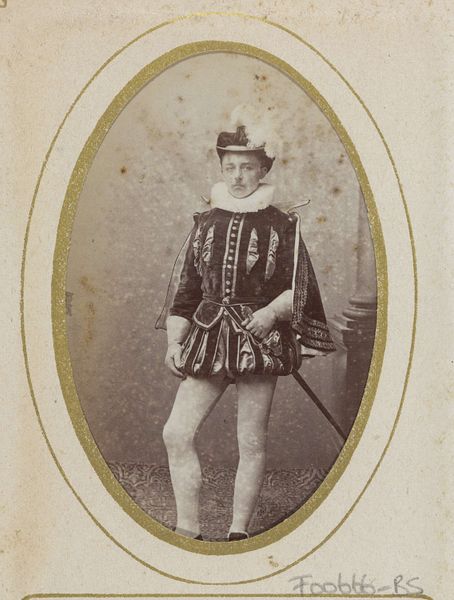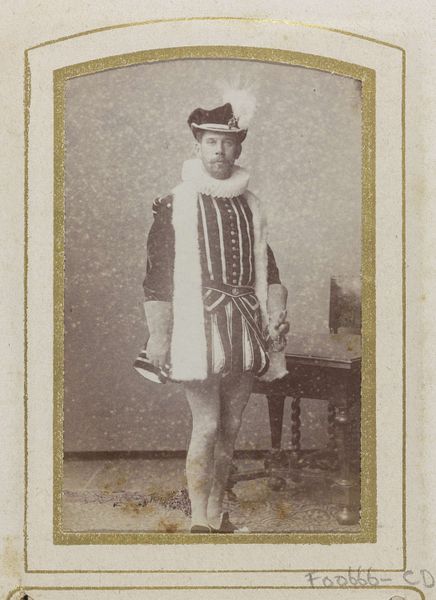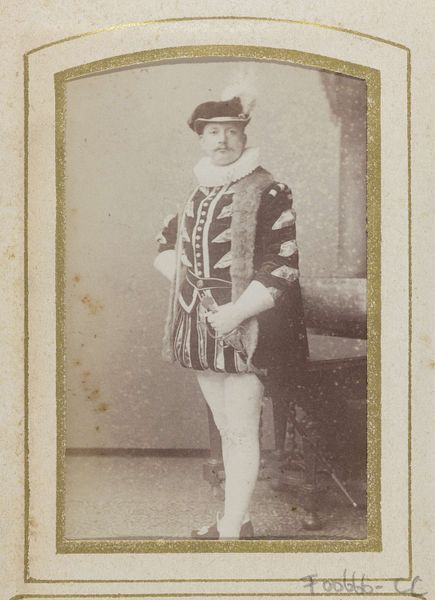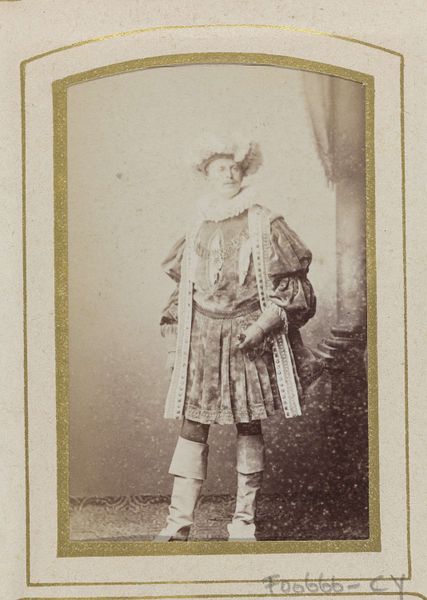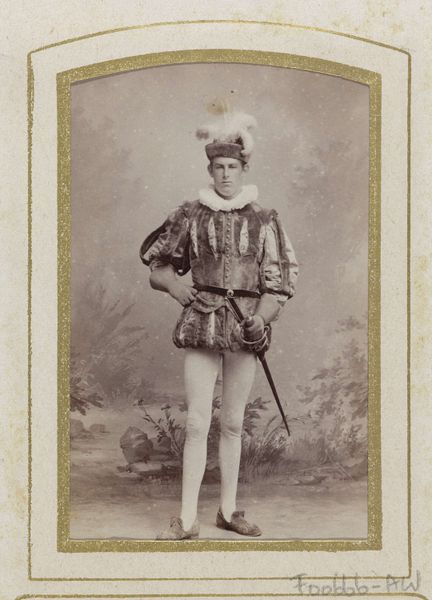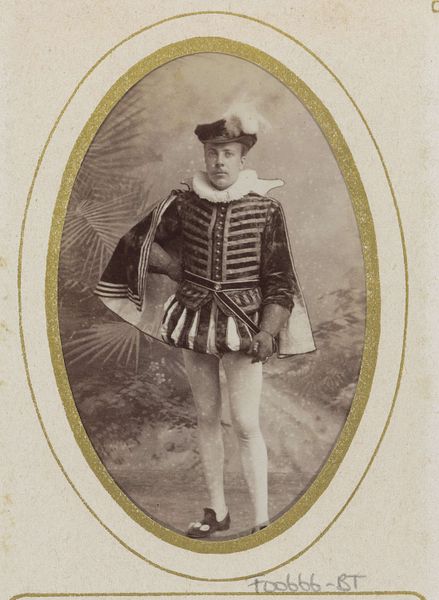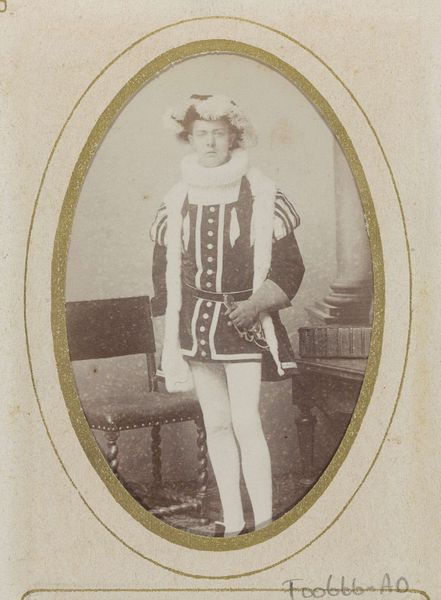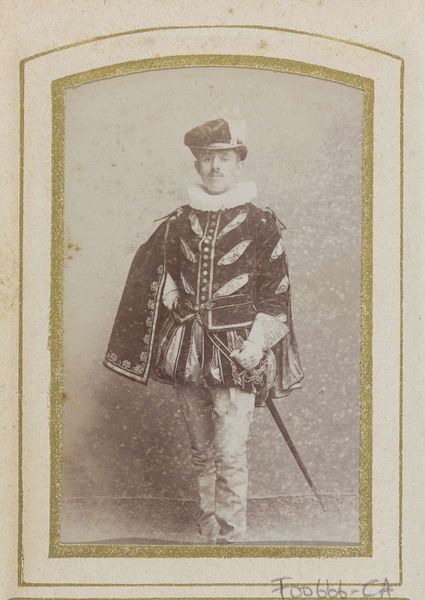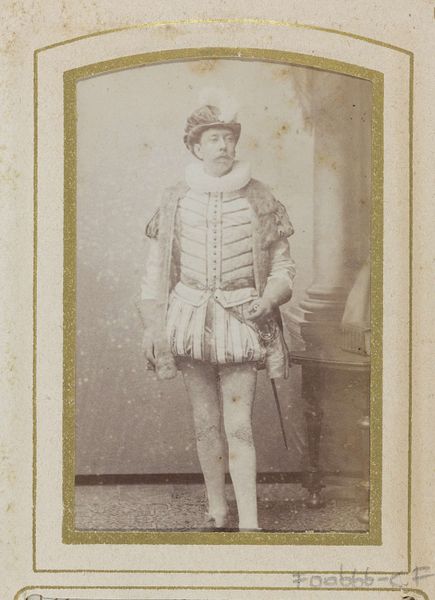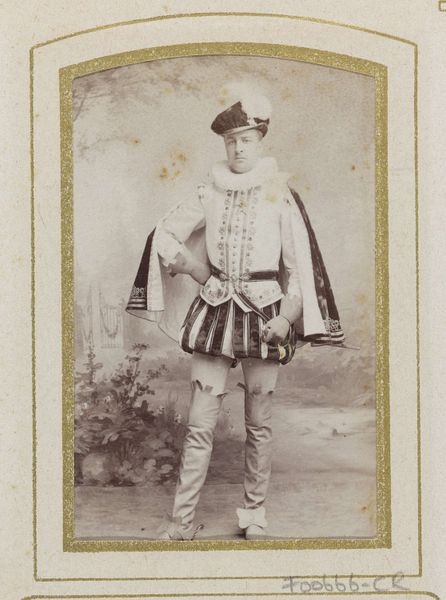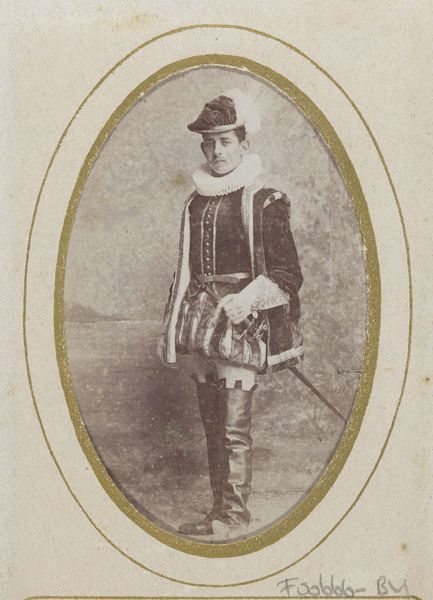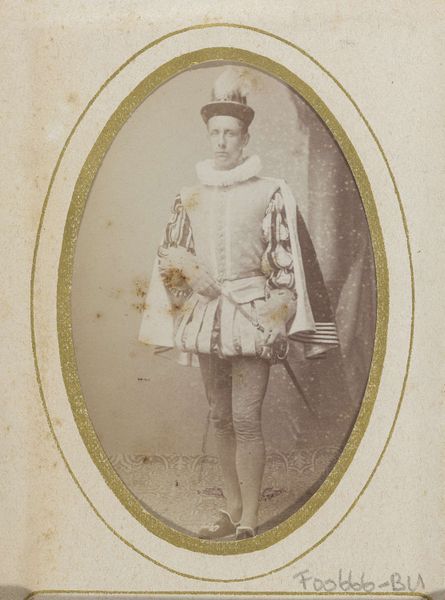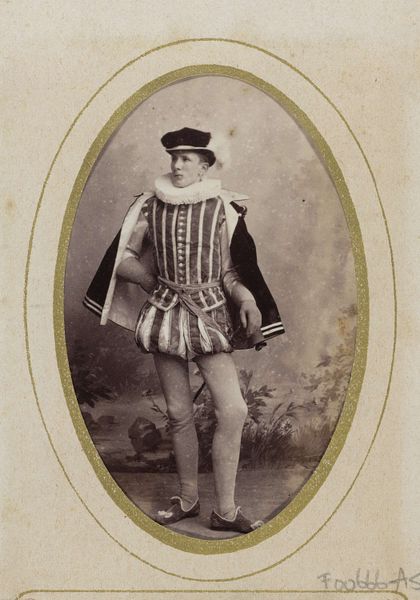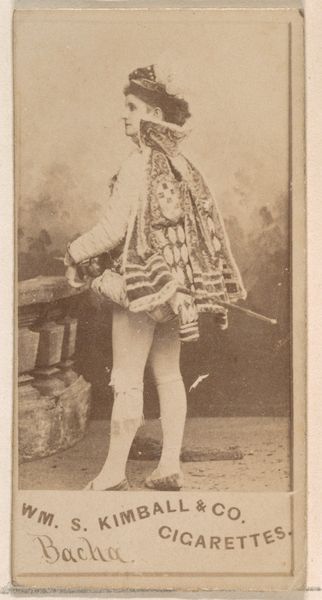
Portret van Tj.A.M.A. Humalda van Eysinga in kostuum met hoed in de hand 1860 - 1905
0:00
0:00
photography
#
portrait
#
photography
#
19th century
#
realism
Dimensions: height 83 mm, width 52 mm
Copyright: Rijks Museum: Open Domain
Curator: This photograph, attributed to Jan Goedeljee, is titled "Portret van Tj.A.M.A. Humalda van Eysinga in kostuum met hoed in de hand." It likely dates from somewhere between 1860 and 1905. The subject appears in theatrical attire, an interesting detail. Editor: He looks like he's just stepped out of a Shakespeare play, or maybe on his way to a particularly extravagant costume party. I find it intriguing that someone chose to be photographed like this—there's an intentionality, almost a performative aspect. Curator: Indeed. Portraiture during this period increasingly served purposes beyond mere likeness. The photograph captures Tj.A.M.A. Humalda van Eysinga, presumably a member of the Dutch elite, enacting a persona through dress. This can tell us about the individual but also about broader social performance. Photography created a democratic way for anyone to present themselves, but social factors, economic limitations, and cultural contexts affected representation. Editor: Absolutely! And I love how the serious expression contrasts with the elaborate costume. The frilly collar, the puffy breeches, and the feathered hat practically scream "drama," but his face is just...stoic. It is such a curious tension! Almost as if there's a story, an untold performance playing out just beneath the surface. Curator: You've pinpointed a key element: photography often freezes moments, yet it's framed and posed. A photographer decides exactly what they want to capture or present, from the model and how they’re placed in relation to each other to background elements and studio space; together, these elements send a clear and sometimes forceful social and political message. He clearly intends a particular impression. This, I think, makes photographic realism distinct, offering insight into both the sitter and society. Editor: It really is fascinating. In some ways, it reminds me of those posed historical reenactments. Almost a living tableau. He’s holding the feather in his hat so tightly! But what was he going to *do* after the photo was taken? So many stories. Curator: Thinking about those stories brings us full circle—to that notion of photographic construction, representation, and selfhood. Thank you for helping me to think through that so thoroughly. Editor: My pleasure. The best part of the art is when it invites questions, and I think that picture does exactly that. I'm already ready to make up several narratives in his honor.
Comments
No comments
Be the first to comment and join the conversation on the ultimate creative platform.
